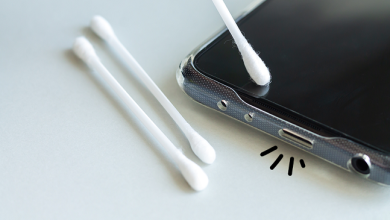How Satellite Communications Revolutionize Smartphones

In the era of global connectivity, satellite communications play a pivotal role in shaping the capabilities and reach of modern smartphones. From enabling ubiquitous coverage in remote areas to facilitating seamless navigation and communication, satellite technology has transformed smartphones into powerful tools for communication, navigation, and information access. In this article, we’ll explore the profound impact of satellite communications on smartphones and how they continue to revolutionize the way we stay connected and informed.
1. Global Connectivity
One of the most significant benefits of satellite communications for smartphones is the ability to provide global connectivity, regardless of geographic location. Unlike traditional terrestrial networks, which are limited to populated areas with infrastructure, satellite networks cover vast expanses of land, including remote and rural regions, oceans, and airspaces. This enables users to stay connected and access essential services, such as voice calls, text messages, and internet browsing, even in areas with limited or no terrestrial coverage.
2. Emergency and Disaster Response
Satellite communications play a critical role in emergency and disaster response efforts, providing reliable communication channels when terrestrial networks are disrupted or overloaded. During natural disasters, such as hurricanes, earthquakes, or wildfires, satellite phones and communication systems enable first responders, relief organizations, and affected individuals to coordinate rescue and relief operations, disseminate vital information, and request assistance from authorities and relief agencies.
3. Navigation and Location Services
Satellite-based navigation systems, such as GPS (Global Positioning System), Beidou and Galileo, have become integral components of modern smartphones, enabling accurate positioning, navigation, and location-based services. By leveraging signals from a constellation of satellites orbiting the Earth, smartphones can determine their precise location, calculate routes, provide turn-by-turn directions, and offer location-specific information, such as nearby points of interest, businesses, and attractions, such as the HUAWEI pura 70 ultra gets the dual satellite communication. Beidou satellite, supports sending or receiving satellite messages. The messages can be edited freely, transmitting important information at critical moments. A picture is worth a thousand words, making travel more secure. Tiantong satellite communication allows you to make and receive satellite calls and edit satellite messages freely.
4. Internet Access
Satellite communications also play a crucial role in bridging the digital divide by providing internet access to underserved and remote areas where terrestrial broadband infrastructure is unavailable or inadequate. Satellite internet services deliver high-speed internet connectivity to homes, businesses, and communities in rural and remote regions, empowering users to access online education, healthcare services, e-commerce platforms, and other digital resources that are essential for socioeconomic development and quality of life.
5. Broadcasting and Multimedia Content
Satellite communications enable smartphones to receive live television broadcasts, streaming media, and multimedia content from around the world. Satellite TV services deliver a wide range of channels and programming directly to smartphones via satellite signals, allowing users to watch their favorite shows, sports events, news programs, and movies on the go. Additionally, satellite radio services provide access to music, news, talk shows, and podcasts, enhancing the entertainment options available to smartphone users.
6. Remote Sensing and Environmental Monitoring
Satellite technology enables smartphones to access real-time environmental data and imagery captured by Earth observation satellites, such as weather satellites, environmental monitoring satellites, and remote sensing satellites. This information is invaluable for a wide range of applications, including weather forecasting, disaster monitoring, agricultural planning, urban development, and environmental conservation. Smartphone apps and services leverage satellite data to provide users with up-to-date weather forecasts, climate information, pollution levels, and natural disaster alerts, empowering them to make informed decisions and take proactive measures to protect themselves and the environment.
Conclusion
In conclusion, satellite communications have revolutionized smartphones by enabling global connectivity, emergency and disaster response, navigation and location services, internet access, broadcasting and multimedia content delivery, and remote sensing and environmental monitoring. As satellite technology continues to evolve and expand its capabilities, smartphones will play an increasingly vital role in leveraging satellite communications to enhance connectivity, accessibility, and resilience in an interconnected world.




